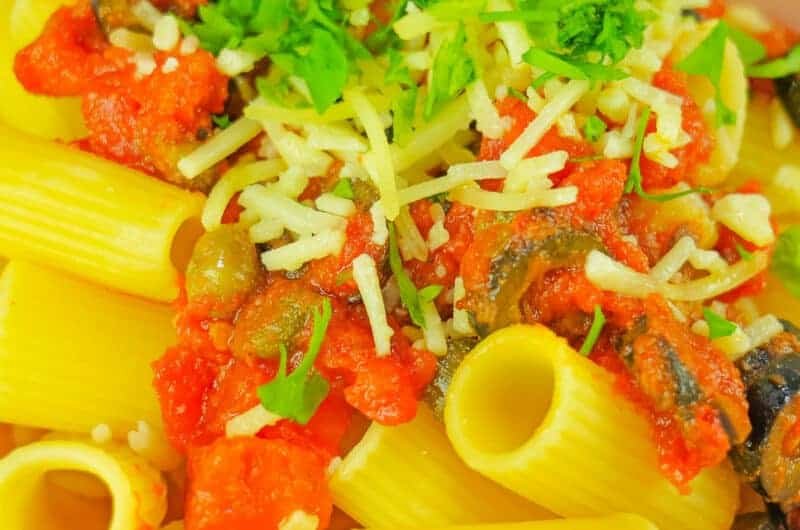Simple yet delicious! That’s why I love Italian food. This Rigatoni Puttanesca certainly delivers on that by skipping the fussy & overly complicated part and going straight to knock your socks off tasty in 35 minutes!
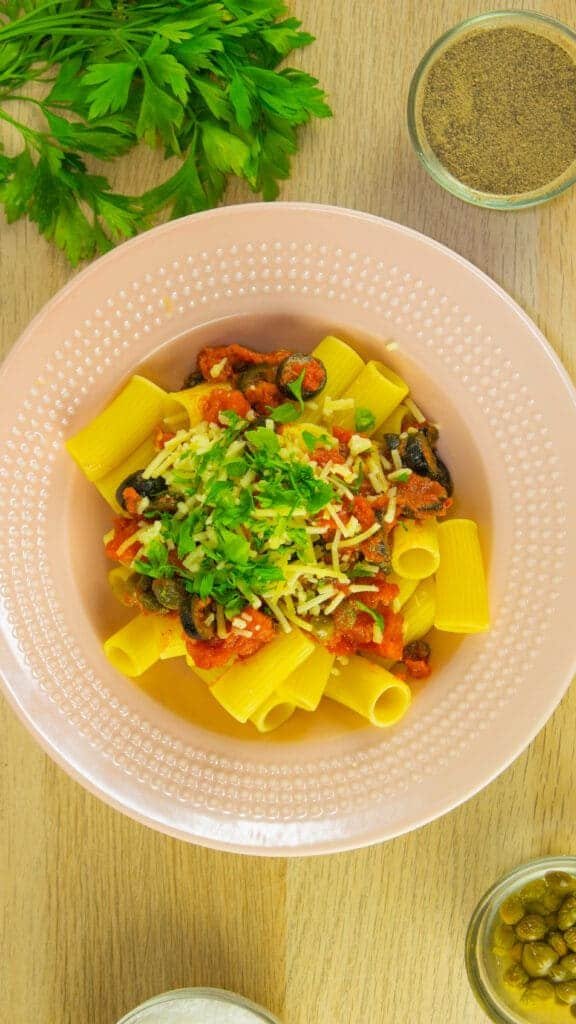
Before I get to my classic rigatoni puttanesca recipe, a quick history lesson (don’t skip this as it’s actually interesting):
Rumour has it that this sauce, with a name translating to “in the style of a prostitute,” was either a quick dish ladies of the night would whip up between appointments or an aromatic lure to draw in potential clientele.
How to Make Classic Rigatoni Puttanesca
A detailed recipe with full quantities can be found in the recipe card at the bottom of this page.
Step 1: The sauce is so quick to make that you actually need to get your pasta on first – unless you’re using fresh pasta, of course. Bring a pot of water to a boil, season with lots of salt and then cook the pasta according to the packet.
Usually, this will be between 8 to 10 minutes for al dente but just cook it how you like it. There are no rules or judgements here!
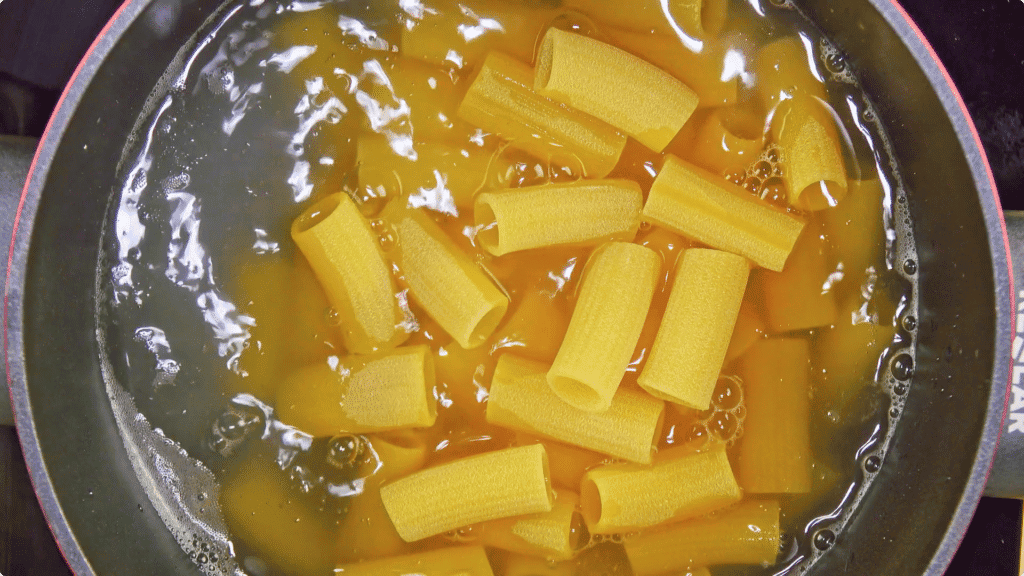
Step 2: While the pasta is cooking, it’s time to get on with making the sauce. Cook the garlic, chilli flakes and anchovies in a little oil. Don’t turn your nose up at the anchovies. They’ll pretty much melt into the sauce but will add so much flavour.
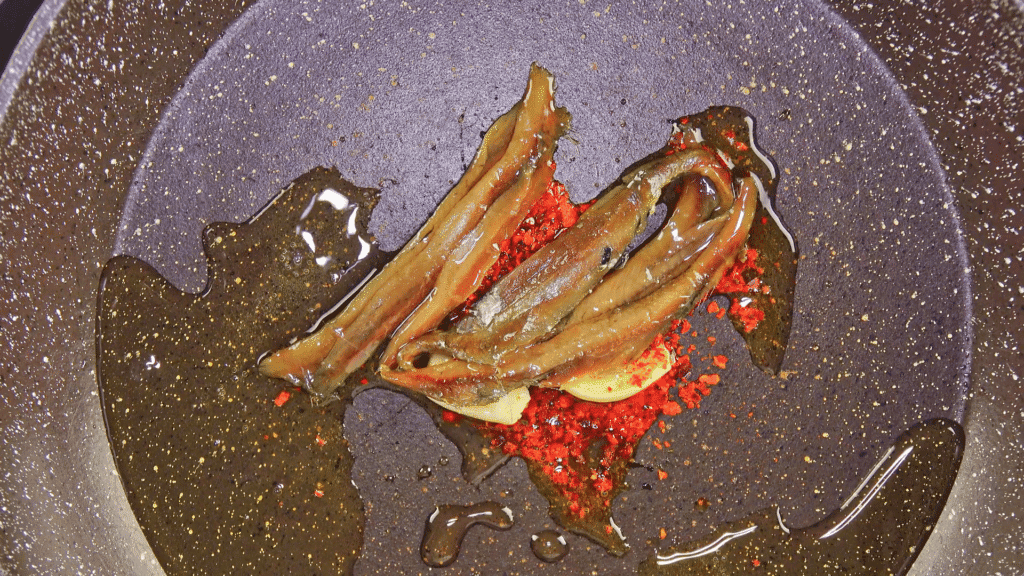
But, Can You Make Puttanesca Without Anchovies?
Yes, you can. While anchovies add a unique depth of flavour, they can be omitted for a vegetarian version. We recommend adding a bit more salt to compensate if you omit the anchovies.
Step 3: Once the garlic is fragrant, add the tomatoes, olives and capers. Seasons and then let the sauce simmer for 10 minutes or so.
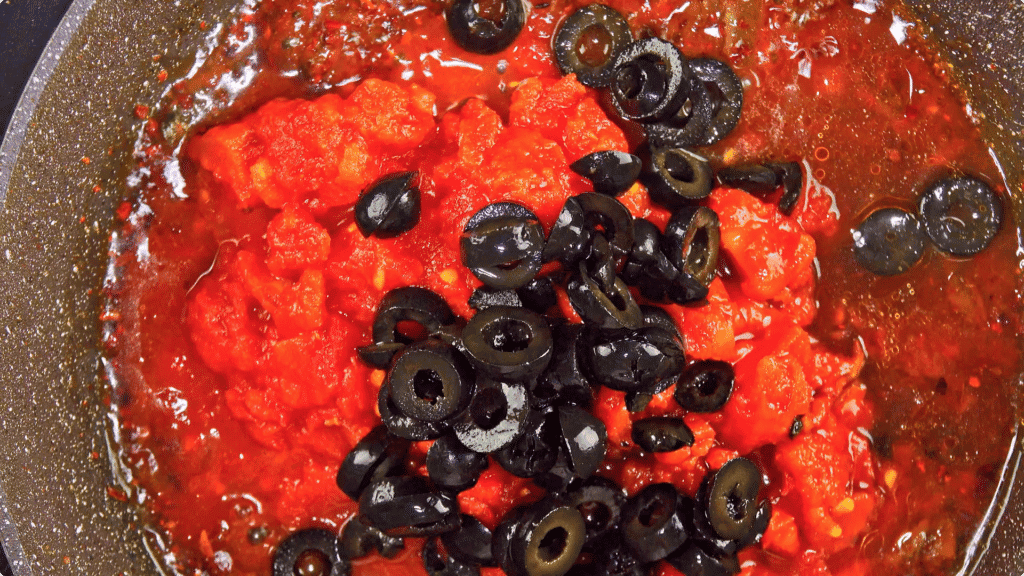
Step 4: Scoop a little pasta water from the pot and drain the pasta before immediately adding it to your sauce. Don’t worry about getting the pasta fully drained. That starchy pasta water will help bring your sauce and pasta together.
Step 5: Serve it hot, sprinkled with parsley and a healthy dose of Parmesan.
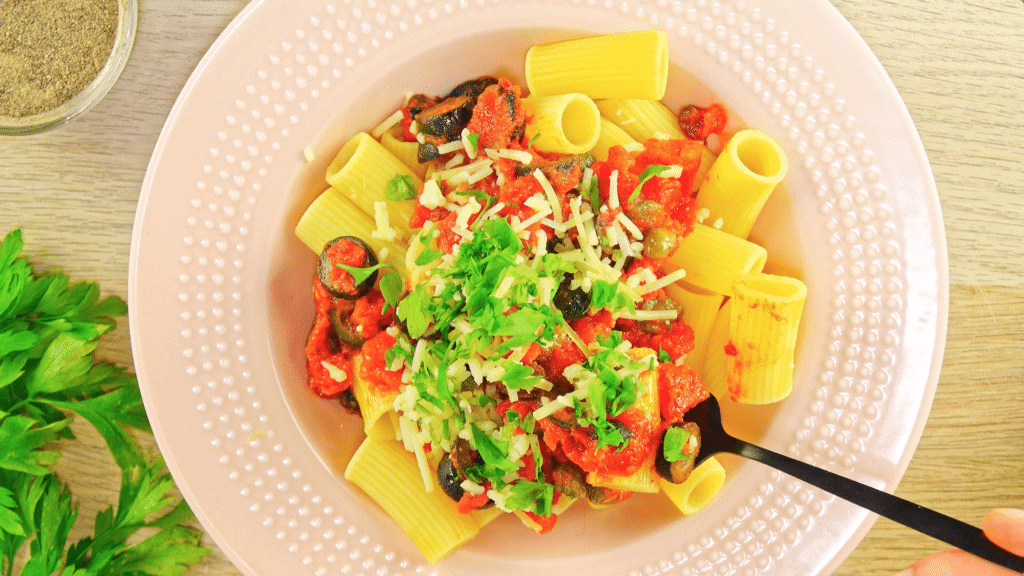
Tweak
I really don’t think this recipe needs any tweaks. But, if you want to experiment a little in the kitchen or don’t have all the ingredients, then try this:
- Go Vegetarian: Remove the anchovies and replace them with a handful of finely chopped chestnut mushrooms to help bulk out the sauce.
- Roast It: Instead of using tinned tomatoes, roast tomatoes on the vine beforehand and then stir them into the pan. You’ll get a more intense, sweet sauce.
- Lighten It: If you want a creamier, lighter sauce then add a spoonful of mascarpone to the sauce at the end. If you think you’ll end up freezing it, though, this is one worth avoiding as mascarpone doesn’t freeze that well.
Store
If you’ve made more puttanesca sauce than you’re going to eat, the good news is that it stores really well depending on how long you want to keep it:
Refrigerate: Let the pasta cool completely before transferring it to an airtight container. Store it in the refrigerator for up to 3 to 5 days. For best quality, separate the pasta from the sauce if possible, but it’s not strictly necessary.
Freeze: I would only freeze the sauce. To freeze, let the pasta sauce cool completely, then transfer it to a freezer-safe container or heavy-duty freezer bag. It can be frozen for up to 3 months.
Reheat: If the pasta and sauce are stored together, the dish can be reheated in the microwave in 1-minute intervals, stirring between each one until heated through.
If you’ve stored the sauce separately, reheat it on the stovetop over medium heat until it’s hot, then toss with freshly cooked pasta.
If the sauce is frozen, you can defrost it in the fridge overnight before reheating, or you can reheat it directly from frozen on the stovetop over low heat, stirring occasionally.

